12 Best Waste Management Carbon Offsets (Complete 2025 List)
Affiliate Disclosure
Hey fellow impactful ninja ?
You may have noticed that Impactful Ninja is all about providing helpful information to make a positive impact on the world and society. And that we love to link back to where we found all the information for each of our posts.
Most of these links are informational-based for you to check out their primary sources with one click.
But some of these links are so-called "affiliate links" to products that we recommend.
Why do we add these product links?
First and foremost, because we believe that they add value to you. For example, when we wrote a post about the environmental impact of long showers, we came across an EPA recommendation to use WaterSense showerheads. So we linked to where you can find them. Or, for many of our posts, we also link to our favorite books on that topic so that you can get a much more holistic overview than one single blog post could provide.
And when there is an affiliate program for these products, we sign up for it. For example, as Amazon Associates, we earn from qualifying purchases.
What do these affiliate links mean for you?
First, and most importantly, we still only recommend products that we believe add value for you.
When you buy something through one of our affiliate links, we may earn a small commission - but at no additional costs to you.
And when you buy something through a link that is not an affiliate link, we won’t receive any commission but we’ll still be happy to have helped you.
What do these affiliate links mean for us?
When we find products that we believe add value to you and the seller has an affiliate program, we sign up for it.
When you buy something through one of our affiliate links, we may earn a small commission (at no extra costs to you).
And at this point in time, all money is reinvested in sharing the most helpful content with you. This includes all operating costs for running this site and the content creation itself.
What does this mean for me personally?
You may have noticed by the way Impactful Ninja is operated that money is not the driving factor behind it. It is a passion project of mine and I love to share helpful information with you to make a positive impact on the world and society. However, it's a project in that I invest a lot of time and also quite some money.
Eventually, my dream is to one day turn this passion project into my full-time job and provide even more helpful information. But that's still a long time to go.
Stay impactful,
Waste management is a crucial practice in the fight against climate change because it helps reduce carbon dioxide (CO2) and methane (CH4) levels. In order to keep pace with the billions of tons of waste we generate every year, more and more companies are joining the race to manage it. So, we had to ask: what are the best waste management carbon offsets?
The best waste management carbon offsets are offered by CoreZero, GreenTech, and Carbonfund which involve food rescue, plastic recycling, and landfill gas capture/conversion to energy, respectively. In addition, Terrapass and South Pole offer landfill gas combustion and biogas to energy projects.
Keep reading to learn more about the best carbon offsets for waste management, how these carbon offset projects work, what their respective offsetting costs are, and what your best way would be to offset your carbon emissions. At the end of the article, we’ll also share with you what the biggest carbon offsetting limitations are and why reducing your carbon footprint is more effective than offsetting it.
Here’s What All the Best Waste Management Carbon Offsets Have in Common
Carbon offsets are reductions in carbon emissions that are used to compensate for carbon emissions occurring elsewhere. They are measured in tons of carbon dioxide (CO2) equivalents and are bought and sold through international brokers, online retailers, and trading platforms on what is known as the global carbon offset market.
“Carbon Offset: a way for a company or person to reduce the level of carbon dioxide for which they are responsible by paying money to a company that works to reduce the total amount produced in the world, for example by reforestation”
Oxford Dictionary
Everyone and everything on Earth creates waste, which is defined as an unwanted or unfavorable byproduct of certain processes.
“Waste: unwanted matter or material of any type, especially what is left after useful substances or parts have been removed”
Cambridge Dictionary
Waste can be classified as solid, hazardous/nonhazardous, agricultural/animal, medical, radioactive, extraction/mining, oil/gas production, and fossil fuel combustion-waste as well as construction/demolition debris and sewage sludge. Population growth, consumption, and economic activity influence the amount of waste generated.
Because we all create waste, managing it is important to the overall health of our planet. Waste management is a broad term that refers to the handling of waste in ways that minimize its impact on human, animal, and environmental health.
“Waste Management: The management of waste materials, usually based on the management of wastes at all stages (production, handling, storage transport, processing, and ultimate disposal) in such a way as to minimize the risks to human health, wildlife, and environmental systems.”
Oxford University Reference
Some of the most common types of waste management carbon offsets involve:
- Landfill gas capture/combustion
- Landfill gas to renewable energy
- Biodigesters
- Biogas
- Recycling
- Food Rescue
- Composting
One of the main goals of waste management carbon offsets is to reduce the total amount of methane (CH4), the second most abundant greenhouse gas (GHG) behind CO2 with a global warming potential 25 times more potent than CO2. Even a little CH4 can greatly exacerbate global warming and its effects.
These Are the Best Waste Management Carbon Offsets in 2025
Below are our favorite waste management carbon offsets (you can click on their link to directly jump to their section in this article):
| Waste Management Carbon Offsets | Quick Facts |
| CoreZero | About: Purchases support waste management projects including food rescue, upcycling, waste-to-energy, and composting. Costs: Costs are determined after initial contact |
| GreenTech | About: They take plastic (e.g., plastic bottles) and sort, grind, wash, and process it into sustainable recycled flakes to make products (e.g., PET flakes, PET straps, and r-PET granules). Costs: $40 per 1,000kg of CO2 |
| Carbonfund | About: Purchases support waste management projects including landfill gas to renewable energy and landfill gas capture. Costs: $16.25-$17.16 per 1,000kg of CO2 for individuals, $390-$1,560 per year for small businesses, determined after initial contact for large businesses |
Tradewater | About: Purchases support waste management projects that find and destroy some of the most potent greenhouse gasses, including refrigerants, halons, and methane emissions from abandoned wells. Costs: $15.50 per 1,000 kg of CO2 for individuals and determined after initial contact for businesses. |
| Terrapass | About: Purchases support waste management projects including landfill gas combustion in Virginia and hydrofluorocarbon recovery/repurposing in Ohio (US). Costs: $16.51-$17.63 per 1,000kg of CO2 for individuals and $16.99 per 1,000kg of CO2 for businesses. |
| South Pole | About: Purchases support waste management carbon offset projects including biodigesters in Vietnam and wastewater biogas in Thailand. Costs: Costs are determined after initial contact |
| 3Degrees | About: Purchases support waste management projects including landfill gas capture in Colorado and landfill gas-to-energy in Montana (US). Costs: Costs are determined after initial contact |
| Native Energy | About: Purchases support waste management projects including landfill gas to energy in New York, US, and CH4 digesters in Pennsylvania, US. Costs: $15.50 per 1,000 kg of CO2 |
| Cool Effect | About: Purchases support waste management projects including biodigesters in India and China. Costs: $8.79 – $21.97 per 1,000 kg of CO2 |
| Co2nsensus | About: Purchases support waste management projects including landfill gas to energy in Turkey. Costs: Costs are determined after initial contact |
| myclimate | About: Purchases support waste management projects including composting to avoid CH4 emissions in India, converting waste to fertilizer in Nepal, and plastic recycling in Romania. Costs: $23-$30 per 1,000kg of CO2 |
| Clear | About: Purchases support waste management projects including landfill gas recovery in Tanzania and CH4 capture in Thailand. Costs: $18.99-$25 per 1,000kg of CO2 |
CoreZero: Food Rescue and Upcycling

CoreZero was founded in 2020 by Jean Pierre Azañedo and Ignacio Bordigoni as a way to reduce global waste and methane (CH4) emissions. Today, they monetize food rescue, upcycling, waste-to-energy, and composting projects through carbon credits.
“Unleash the monetary potential of zer0-waste.”
CoreZero
Carbon offset overview: CoreZero generates carbon credits in a few different ways, including via food banks, upcycling, composting, and wastewater treatment plants. They work directly with food banks to rescue food before it can become waste. They also create carbon credits based on the environmental impact of wastewater treatment plants, which can encourage organizations to invest more in the technology.
Carbon offset effectiveness: CoreZero’s offsets are verified by an independent third party and, depending on the specific offset, are certified by either the Verified Carbon Standard, Gold Standard, American Carbon Registry, or the Global Carbon Council.
Carbon offset costs: Costs are determined after initial contact.
How to get your carbon offsets: You can visit CoreZero’s website and contact a representative to get your carbon offsets.
GreenTech: Plastic Waste Conversion
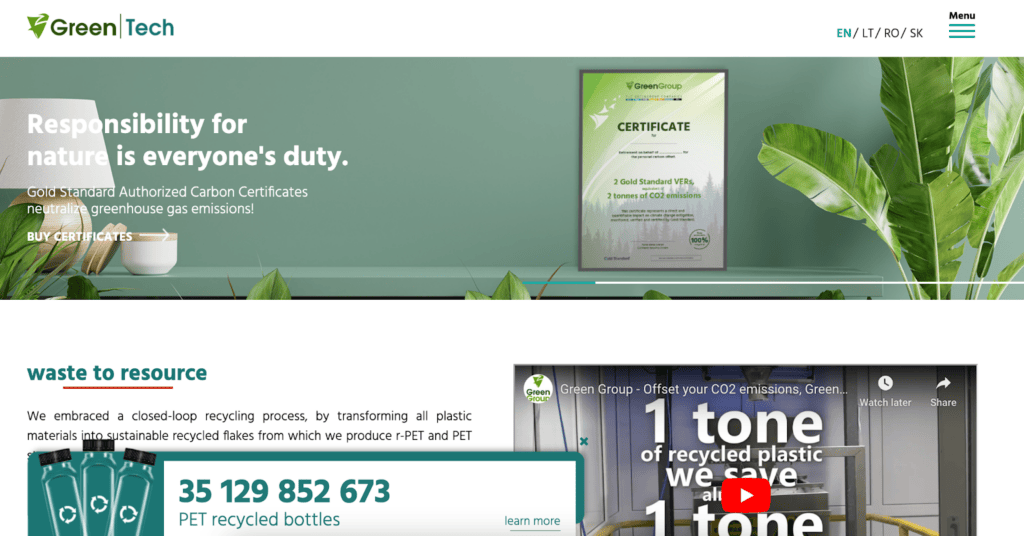
GreenTech was founded in 2002 as an offshoot of GreenGroup, Europe’s largest integrated recycling park. Today, they recycle over 100,000 tons of plastic per year, helping to reduce CO2 emissions and improve the lives of the communities they serve.
“Responsibility for nature is everyone’s duty”
GreenTech
Carbon offset overview: GreenTech is the first European recycling company to be endorsed by the Gold Standard for their issuance of polyethylene terephthalate (PET) recycling carbon credits. They take plastic (e.g., plastic bottles) and sort, grind, wash, and process it into sustainable recycled flakes to make products (e.g., PET flakes, PET straps, and r-PET granules). This results in up to 60% less CO2 emissions compared to manufacturing products from virgin inputs.
Carbon offset effectiveness: GreenTech’s offsets are certified by the Gold Standard and adhere to multiple UN Sustainable Development Goals.
Carbon offset costs: It costs approximately $40 per 1,000kg of CO2 offset.
How to get your carbon offsets: You can visit their website to purchase your waste management carbon offsets.
Carbonfund: Landfill Gas to Energy

Carbonfund was founded in 2003 by Eric Carlson to make it easy for any individual, business, or organization to reduce and offset their climate impact. Today, they have been incorporated into ClimeCo and provide verified energy efficiency, renewable energy, and forestry carbon offsets for individuals and businesses.
“Reduce what you can, offset what you can’t.”
Carbonfund
Carbon offset overview: Carbonfund supports the New Bedford Landfill gas-to-renewable energy and Seneca Meadows landfill projects located in the US. The new Bedford power plant produces clean energy from landfill gas containing methane (CH4) and CO2. The Seneca landfill project collects/destroys landfill gas and delivers some of the gasses to be used in a gas-to-energy plant. Both projects reduce CH4 emissions, air pollution, and water pollution while mitigating climate change.
Carbon offset effectiveness: The New Bedford Landfill gas-to-energy project is certified by the Verified Carbon Standard. The Seneca Meadows landfill project is certified by the American Carbon Registry.
Carbon offset costs: Individual carbon offsets range from $16.25-$17.16 per 1,000kg of CO2, small business carbon offsets range from $390-$1,560 per year (dependent on the number of employees), and large business carbon offset costs are evaluated after personal contact.
How to get your carbon offsets: You can visit their website to purchase your individual or business waste management carbon offsets.
Tradewater: Destroying the Most Potent Greenhouse Gasses
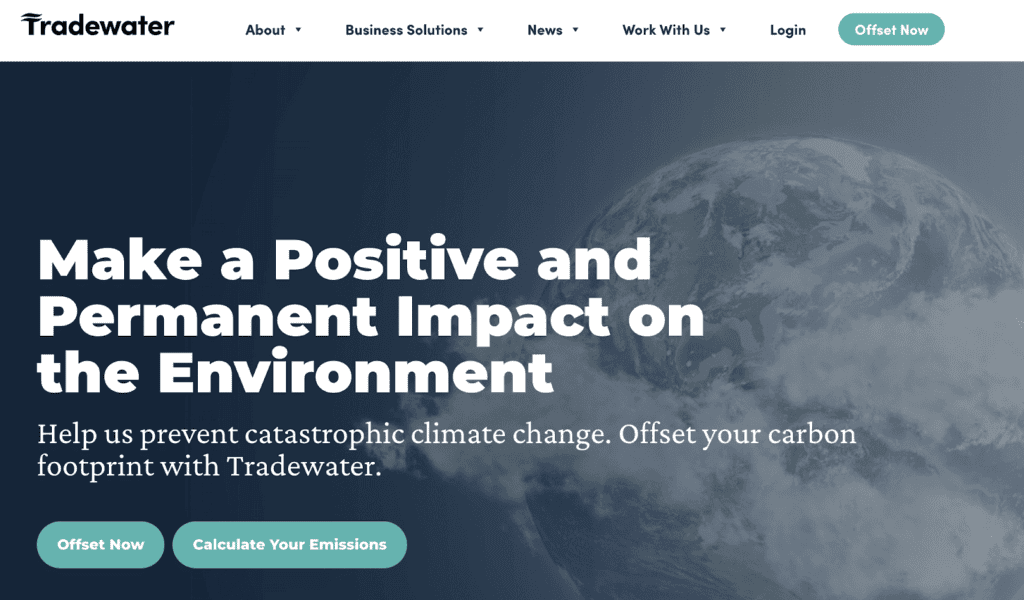
Tradewater was founded in 2016 by Tim Brown to find and destroy the most potent greenhouse gasses before they can be released into our atmosphere. Today, their mine methane and refrigerant offset projects have helped destroy almost 7 million tons of CO2.
“Take action by destroying greenhouse gasses”
Tradewater
Carbon offset overview: Tradewater has projects on three continents that target and destroy some of our most potent greenhouse gasses including halocarbons (e.g., refrigerants and halons) and methane emissions from abandoned oil/gas wells and mines. They find sources of halocarbons in garages, auto shops, HVAC stores, and stockpiles and permanently destroy them. They also find abandoned wells and plug them to prevent future methane leakage.
Carbon offset effectiveness: Tradewater adheres to protocols established by the California Air Resources Board and uses the American Carbon Registry and the Verified Carbon Standard to help ensure transparency and quality in the creation, quantification, and verification of their offset projects.
Carbon offset costs: Individual carbon offsets cost $18 per 1,000kg of CO2. Their small, medium, or large business offsets are evaluated after initial contact.
How to get your carbon offsets: You can visit their website to use their carbon footprint calculator and purchase your individual or business waste management carbon offsets.
Terrapass: Landfill Gas Combustion

Terrapass was founded in 2004 by Dr. Karl Ulrich to reduce as many carbon emissions as possible via the use of education, online tools, carbon offsets, and renewable energy. Today, they provide verified landfill gas capture, renewable energy, and forestry carbon offsets for individuals and businesses.
“Restore the balance.”
Terrapass
Renewable energy credit overview: Terrapass offers many options for individuals and businesses looking to offset their carbon footprint. Example waste management offset projects include the Henrico County Landfill Gas Combustion Project, which captures and destroys CH4 emissions from a landfill in Virginia, US. Also the A-Gas Voluntary Emission Reduction Project, which recovers, reclaims, and repurposes used hydrofluorocarbons (HFCs) from refrigeration and air conditioning equipment in Ohio (US).
Renewable energy credit effectiveness: Terrapass uses the Verified Carbon Standard, Gold Standard, American Carbon Registry, and the Climate Action Reserve to help ensure transparency and quality in the creation, quantification, and verification of their projects.
Renewable energy credit costs: Individual carbon offsets range from $16.51-$17.63 per 1,000kg of CO2, and business carbon offsets cost approximately $16.99 per 1,000kg of CO2.
How to get your renewable energy credits: You can visit Terrapass’ website to purchase your waste management carbon offsets either as an individual or a business.
South Pole: Biodigesters and Biogas
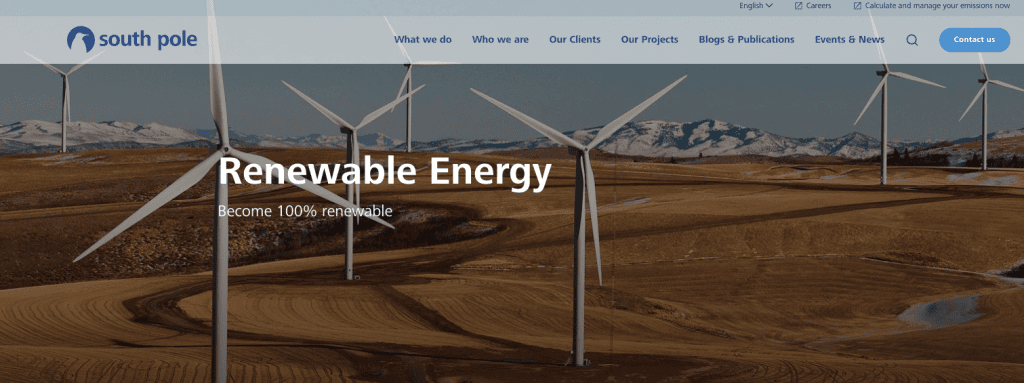
South Pole was founded in 2006 by 5 graduate students from the Swiss Federal Institute of Technology (ETH) as a platform to confront climate change. Today, they offer a wide variety of climate solutions including carbon offsets, environmental credits, and renewable energy credits (RECs).
“From ambition to action”
South Pole
Carbon offset overview: South Pole has a portfolio of over 700 verified carbon offset projects involving energy efficiency, biodiversity, clean water, and renewable energy. Examples of some of their waste management carbon offsets include biodigesters for Kenyan farmers, avoiding CH4 emissions in Vietnam, and generating electricity from wastewater biogas in Thailand.
Carbon offset effectiveness: South Pole’s carbon offset projects are certified by either the Verified Carbon Standard, Gold Standard, American Carbon Registry, or Climate Action Reserve. They are also aligned with the Paris Agreement and the United Nations Sustainable Development Goals.
Carbon offset costs: Costs are determined after initial contact.
How to get your carbon offsets: You can visit South Pole’s website and contact a representative to get your energy-efficiency carbon offsets.
3Degrees: Landfill Gas-to-Energy

3Degrees was founded in 2007 by Steve McDougal and Dan Kalafatas to impact the renewable energy credit (REC), carbon offset, and green power industries. Today, they help organizations around the world achieve decarbonization and renewable energy goals via the use of carbon credits, RECs, renewable natural gas certificates, and climate consulting.
“Making climate action possible.”
3Degrees
Project overview: 3Degrees supports forest management, landfill gas capture, renewable energy, energy efficiency, and sulfur hexafluoride reduction offset projects. 3Degrees supports the Larimer County Landfill Gas project in Colorado, US, which captures and burns CH4, and the Flathead Electric Cooperative Landfill Gas-To-Energy project in Montana, US, which generates electricity from CH4 combustion.
Carbon offset effectiveness: 3Degrees develops carbon offset projects that are third-party verified and adhere to one of the following global standards, Climate Action Reserve, American Carbon Registry, Verified Carbon Standard, or Gold Standard.
Carbon offset costs: Costs are determined after initial contact.
How to get your carbon offsets: You can visit 3Degrees’ website and contact a representative to get your waste management carbon offsets.
Native Energy: Landfill Gas-to-Energy
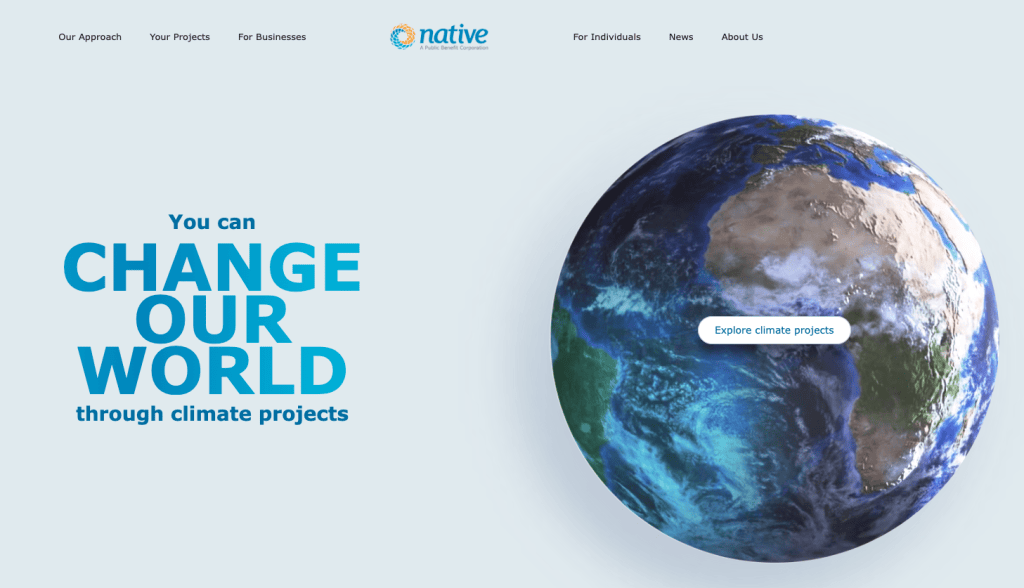
Native Energy was founded in 2000 by Jeff Bernicke as a platform for organizations to implement projects that reduce greenhouse gas emissions and combat climate change.
Today, they offer carbon offsets and renewable energy solutions that allow clients to invest and enable the development of new climate projects with direct business benefits.
“Envision your ideal climate solution. Let us build it.”
Native
Carbon offset overview: Native’s HelpBuildTM carbon offsets bridge the gap between the funding and building phases. You purchase offsets from the project in advance, so you, therefore, play a key role in funding its construction. Examples of waste management projects include the Seneca Meadows Landfill Gas to Energy project, which captures and converts landfill gas to electricity, and the Mains Family Farm project, where an anaerobic digester was installed for the purpose of manure conversion and electricity generation.
Carbon offset effectiveness: Their waste management projects are verified according to the Verified Carbon Standard. All of Native’s offsets are verified by the Verified Carbon Standard, Gold Standard, American Carbon Registry, Climate Action Reserve, Plan Vivo, or the Climate, Community & Biodiversity Alliance to help ensure transparency and quality in the creation, quantification, and verification of offset projects.
Carbon offset costs: It costs $15.50 per 1,000kg of CO2 offset.
How to get your carbon offsets: You can visit their website and contact a representative to get more information about and support their efficient cookstoves project.
Cool Effect: Biodigesters
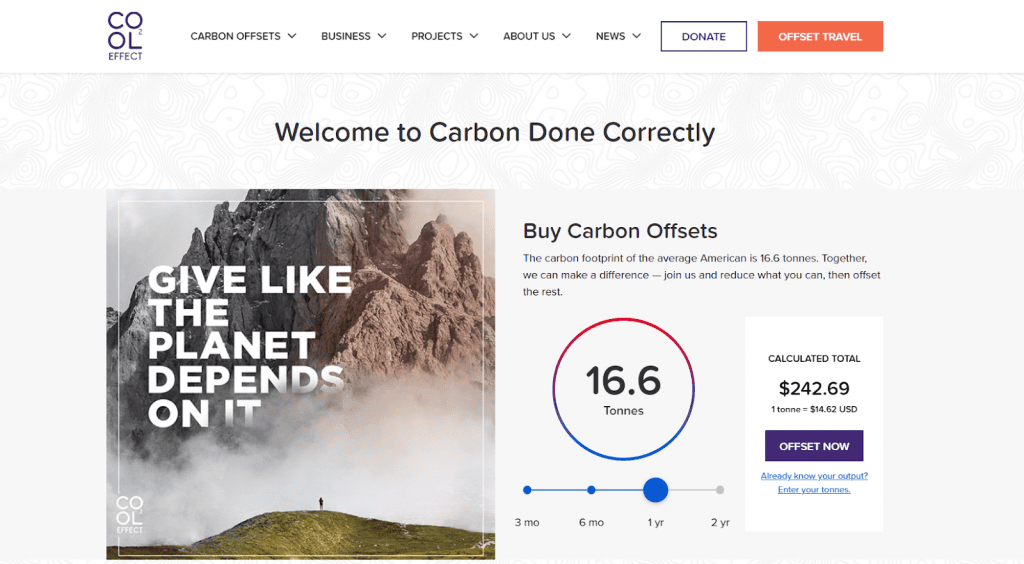
Cool Effect was founded in 1998 by Richard H. Lawrence, Jr. and Dee Lawrence as a small cookstove project in Honduras. Today, they have grown to represent a platform with 15+ global projects and a community of 500,000+ that aims to reduce carbon pollution globally.
“Carbon done correctly”
Cool Effect
Project overview: Cool Effect offers carbon offsets for travel and flights. An example of a waste management project is the Doo Doo Does More project in India, which installs biodigesters in Indian homes to convert waste into CH4 gas. The gas is then used for cooking and can replace traditional wood-burning stoves. Also the Cooking With Gas project in China, which installs biodigesters in homes to capture CH4 gas and convert it to renewable energy.
Carbon offset effectiveness: Cool Effect’s projects are 100% additional and are verified by either the Gold Standard, Verified Carbon Standard, or Climate Action Reserve. Each project is verified by one of the leading standards, an independent auditor, and Cool Effect each year, resulting in a triple verification process.
Carbon offset costs: An individual purchase costs $14.62 per 1,000 kg of CO2 offset, and a specific project costs anywhere from $8.79 – $21.97 per 1,000 kg of CO2 offset.
How to get your carbon offsets: You can visit Cool Effect’s carbon projects and pricing information webpage to get your energy-efficiency carbon offsets.
Co2nsensus: Landfill Gas-to-Energy
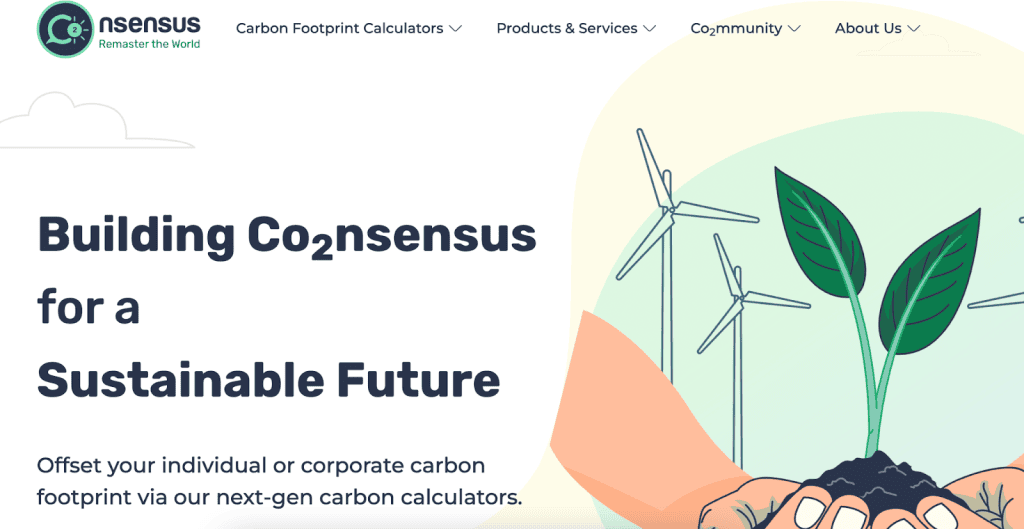
Co2nsensus was founded in 2019 by Bekir Cetin as a climate-tech company focused on helping individuals and businesses neutralize their carbon footprint. Today, they provide various carbon footprint calculators, carbon offsets for individuals, carbon management software, and a carbon-neutral e-delivery system for e-commerce.
“Building Co2nsensus for a Sustainable Future”
Co2nsensus
Project overview: Co2nsensus has a variety of personal carbon calculators that support carbon offset projects involving energy efficiency, reforestation, wind energy, landfill gas, biomass, and hydropower. An example of a waste management project is the Adana Landfill Gas project in Turkey. The project uses landfill CH4 gas to generate electricity which is supplied to the national power grid.
Carbon offset effectiveness: All of Co2nsensus’ carbon offset projects are certified by either the Gold Standard or Verified Carbon Standard and contribute to one or more of the UN Sustainable Development Goals.
Carbon offset costs: Pricing varies depending on the type of offset and project.
How to get your carbon offsets: You can visit their website to use their carbon footprint calculator to get your energy-efficiency carbon offsets.
myclimate: Composting, Recycling, and Waste-to-Fertilizer
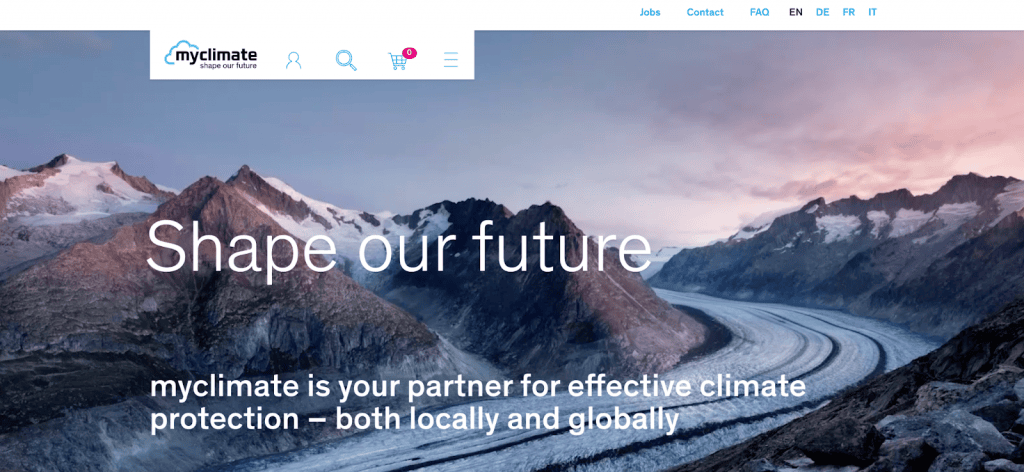
myclimate was founded in 2002 by Renat Heuberger, Thomas Camerata and Patrick Bürgi as an international climate organization with Swiss roots. Today, they have expanded to 45 countries and work with companies of all sizes, public administrations, non-profit organizations, and private individuals to provide high-quality carbon offset projects with quantifiable climate protection.
“myclimate is your partner for effective climate protection – locally and globally”
Myclimate
Carbon offset overview: myclimate provides carbon offsets, including energy-efficiency projects, for flights, cars, cruises, events, and your household. Examples of waste management offset projects include composting to avoid CH4 emissions in India, converting waste to fertilizer in Nepal, and plastic recycling in Romania.
Carbon offset effectiveness: myclimate projects are certified according to either the Gold Standard, Verified Carbon Standard, or Plan Vivo and contribute to the UN’s Sustainable Development Goals.
Carbon offset costs: It costs approximately $30 per 1,000kg of CO2 offset for an individual carbon offset and $23 per 1,000kg of CO2 offset for a monthly, quarterly, or annual offset subscription.
How to get your carbon offsets: You can visit myclimate’s website to offset your emissions from flights, cars, cruises, events, or your household and get your energy-efficiency carbon offsets. You can also enroll in a subscription or donate to myclimate’s mission by either contributing a certain dollar amount or offsetting a certain number of kg of CO2.
Clear: Landfill Gas Recovery and Wastewater Treatment

Clear was founded in 2005 by Bruce Elliott, Neil Chapman, and Ben Hedley to empower individuals and smaller companies to easily take environmental action now. Today, they provide individuals and businesses the opportunity to offset activities such as staying in hotels, commuting, public transport, maritime freight, and even skydiving and balloon flights.
“Will this carbon offset really cover the emissions I can’t avoid creating?” Clear is dedicated to living up to that promise.”
Clear
Carbon offset overview: Clear offers a wide variety of carbon offsets for individuals and businesses. Examples of waste management offset projects include the Tanzania landfill gas recovery project, the Thailand Wastewater Treatment Plant project, and the Thailand Tapioca Methane Capture and Sustainable Energy project.
Carbon offset effectiveness: Clear carbon offsets are the first in the world to be independently certified against the Quality Assurance Standard (QAS), a comprehensive independent audit system for companies wanting to become carbon neutral through carbon reduction.
Carbon offset costs: It costs approximately $18.99–$25 per 1,000kg of CO2 offset. They also offer the option to make your purchase carbon-negative at 50%, 100%, or 200% which increases the overall cost accordingly.
How to get your carbon offsets: You visit Clear’s website to use their carbon offset calculator and get your energy-efficiency carbon offsets.
How Effective and Efficient Are Waste Management Carbon Offsets
In terms of effectiveness, waste management carbon offsets reduce methane emissions and land, water, and air pollution. However, they can also lack additionality and do not reduce your own carbon emissions.
In terms of efficiency, waste management carbon offsets are relatively cost-effective. However, they are not yet scaled to compensate for our global waste emissions.
Waste management carbon offsets are effective at mitigating climate change because they:
- Reduce CH4 emissions via food rescue or CH4 gas capture, combustion, and conversion-to-energy projects
- Can help reduce land, air, and water pollution by reducing the amount of waste entering our landfills and ecosystems
Waste management carbon offsets can also lack effectiveness because they often lack additionality, as many projects receiving revenue now would have been built regardless.
Waste management carbon offsets are efficient at reducing CO2 emissions because they are relatively cost-effective when compared to other methods of carbon emission reduction.
However, waste management carbon offsets can also lack efficiency because they are not yet scaled to offset emissions from our global waste generation.
Also, waste management carbon offsets do not reduce your own carbon emissions, which can lead to greenwashing. This occurs when emissions are only offset and not reduced from the source, and the consumer is deceived into thinking they are offsetting their emissions but in reality, they are not. This is why we should first reduce our emissions before relying on offsets.
What Are The 5 Pros and 3 Cons of Waste Management Carbon Offsets
Waste management carbon offsets reduce methane emissions, reduce pollution, protect the biosphere, are relatively cost-effective, and allow us to reduce emissions in ways we wouldn’t be able to accomplish individually.
Waste management carbon offsets are not yet scaled to compensate for our global waste emissions, can lack additionality, and do not reduce your own carbon emissions.
What Are the 5 Pros of Waste Management Carbon Offsets
Waste management carbon offsets have various pros that make them effective at avoiding carbon and methane emissions.
| 5 Pros of Waste Management Carbon Offsets | Quick Facts |
| #1: Waste management carbon offsets reduce methane emissions | Waste management offsets involving CH4 gas capture, combustion, or conversion-to-energy prevent CH4 from entering our atmosphere. Because CH4 is more potent than CO2, removing it is a quick way to slow the rate of global warming, at least in the short term. |
| #2: Waste management carbon offsets reduce pollution | Waste management carbon offset projects can help reduce land, air, and water pollution because they aim to reduce the amount of waste entering our landfills and ecosystems. |
| #3: Waste management carbon offsets protect the biosphere | Waste management carbon offsets remove GHG emissions from the atmosphere and cut down on pollution, thereby improving air quality and protecting the biosphere. |
| #4: Waste management carbon offsets are relatively cost-effective | Waste management carbon offsets from leading providers (e.g., Carbonfund, Terrapass, and Native) cost less than $20 per ton of CO2 offset. Compare this to direct carbon capture offsets which can cost anywhere from $100-$1,200 per ton of CO2 offset. |
| #5: Waste management carbon offsets allow us to reduce carbon emissions in ways we wouldn’t be able to accomplish individually | Waste management carbon offsets allow us to reduce emissions from activities where sustainable alternatives are not yet widely available. |
What Are the 3 Cons of Waste Management Carbon Offsets
Understanding the drawbacks of waste management carbon offsets is important in order to effectively mitigate climate change.
| 3 Cons of Waste Management Carbon Offsets | Quick Facts |
| #1: Waste management carbon offsets are not yet scaled to compensate for our global waste emissions | Because waste management offsets are only a small subsection of the larger carbon offset market, they are also inadequate in terms of offsetting emissions from our global waste generation. |
| #2: Waste management carbon offsets can lack additionality | The global waste management market is expected to grow to $2.5 billion by 2030 due to the increasing rate at which and the amount of waste we generate annually. The large demand for waste management in general means that the infrastructure could have been built independently of waste management carbon offsets. |
| #3: Waste management carbon offsets do not reduce your own carbon emissions, which can lead to greenwashing | If emissions are only offset and not reduced from the source, this could lead to greenwashing, when the consumer is deceived into thinking they are offsetting their emissions but in reality, they are not. |
How Can Waste Management Carbon Offsets Help Mitigate Climate Change
Climate change is a severe and long-term consequence of fossil fuel combustion. Waste management offsets can help mitigate climate change because they eliminate fossil-fuel-derived CO2 and CH4 from our atmosphere which has a higher warming potential than CO2 and, if left untreated, can remain there for tens of thousands of years and exacerbate the negative effects of climate change.
How is Climate Change Defined
Climate change is arguably the most severe, long-term global impact of fossil fuel combustion. Every year, approximately 33 billion tons (bt) of CO2 are emitted from burning fossil fuels. The carbon found in fossil fuels reacts with oxygen in the air to produce CO2.
“Climate change: changes in the earth’s weather, including changes in temperature, wind patterns and rainfall, especially the increase in the temperature of the earth’s atmosphere that is caused by the increase of particular gasses, especially carbon dioxide.” Oxford Dictionary
Oxford Dictionary
Atmospheric CO2 fuels climate change, which results in global warming. When CO2 and other air pollutants absorb sunlight and solar radiation in the atmosphere, it traps the heat and acts as an insulator for the planet. Since the Industrial Revolution, Earth’s temperature has risen a little more than 1 degree Celsius (C), or 2 degrees Fahrenheit (F). Between 1880-1980 the global temperature rose by 0.07C every 10 years. This rate has more than doubled since 1981, with a current global annual temperature rise of 0.18C, or 0.32F, for every 10 years.
As outlined in the 2015 Paris Climate Agreement, we must cut current GHG emissions by 50% by 2030 and reach net zero by 2050.
How Do Carbon Offsets Generally Help Mitigate Climate Change
Levels of carbon in our atmosphere that cause climate change have increased as a result of human emissions since the beginning of the Industrial Revolution in 1750. The global average concentration of carbon dioxide in the atmosphere today registers at over 400 parts per million. Carbon offsets can help prevent these levels from increasing even more.
When you hear the words “carbon offset”, think about the term “compensation”. Essentially, carbon offsets are reductions in GHG emissions that are used to compensate for emissions occurring elsewhere.
Carbon offsets that meet key criteria and verified project standards, are additional and permanent, and are part of projects carried out until the end of their lifespan have the best chance of reducing carbon emissions and climate change.
When we offset CO2 we also slow the rate of global temperature rise, which in turn minimizes the effects of climate change.
How Do Waste Management Carbon Offsets Specifically Help Mitigate Climate Change
Waste management carbon offsets can specifically help mitigate climate change because they primarily target CH4 emissions, which are the second-most abundant GHG after CO2 and are 25 times more potent than CO2 at trapping heat in our atmosphere. Higher levels of CH4 speed up and exacerbate the effects of global warming (e.g., sea level rise, melting of glaciers, temperature rise).
As outlined in the 2015 Paris Climate Agreement, we must cut current greenhouse gas (GHG) emissions, including CH4, by 50% by 2030 and reach net zero by 2050. Waste management offsets are important to meet these targets because they curb CH4 and carbon emissions that, when emitted, can remain in our atmosphere for tens of thousands of years.
Final Thoughts
The best waste management carbon offsets are offered by CoreZero, GreenTech, and Carbonfund which involve food rescue, plastic recycling, and landfill gas capture/conversion to energy, respectively. In addition, Terrapass, 3Degrees, Native Energy, Co2nsensus, and Clear focus on landfill gas whereas South Pole and Cool Effect use biodigesters. Lastly, myclimate uses composting, recycling, and waste-to-fertilizer methods.
Waste management offsets reduce waste and the GHG emissions waste generates, thereby helping to reduce global atmospheric CO2 and CH4 levels. But for all of the good carbon offsets can instigate, they should not be seen as the only solution to climate change. They are effective at reducing GHGs in the short term, but in the long term, they fail to reduce GHGs enough.
When used in conjunction with direct CO2 reduction measures, carbon offsetting can be much more effective. We should reduce our own carbon footprint as much as possible first, and only then choose the most effective waste management carbon offsets.
Stay impactful,

Sources
- U.S. Environmental Protection Agency: Offsets and RECs -What’s the Difference?
- Britannica: Carbon Offset
- David Suzuki Foundation: Are carbon offsets the answer to climate-altering flights?
- US Environmental Protection Agency: Wastes
- Conserve Energy Future: What is Waste Management and Various Methods of Waste Disposal?
- US Environmental Protection Agency: Importance of Methane
- Impactful Ninja: What Are Waste Management Carbon Offsets and How Do They Work? The Big Picture
- CoreZero: Homepage
- LinkedIn: CoreZero – About
- CoreZero: Contact Us
- GreenTech: Homepage
- GreenGroup: Homepage
- GreenTech: Reducing CO2
- United Nations Department of Economic and Social Affairs: The 17 Goals
- GreenTech: Gift Certificates
- Carbonfund: Homepage
- ClimeCo: Homepage
- Carbonfund: About Us
- Carbonfund: Our Renewable Energy Projects
- Verified Carbon Standard: Homepage
- American Carbon Registry: Homepage
- Carbonfund: For Individuals
- Carbonfund: Become a Small Business Partner
- Carbonfund: Become a Large Business Partner
- Tradewater: Homepage
- Tradewater: Tradewater is working to make the greatest possible difference in the fight against climate change
- Tradewater: Project Types
- Tradewater: Halocarbon Projects
- Tradewater: Methane
- California Air Resources Board: Homepage
- Tradewater: Offset Now
- Tradewater: Tradewater Partnerships – Small, Medium, and Large Enterprises
- Terrapass: Homepage
- Terrapass: About
- Terrapass: Henrico County Landfill Gas Combustion Project
- Terrapass: A-Gas Voluntary Emission Reduction Project
- The Gold Standard: Homepage
- Climate Action Reserve: Homepage
- Terrapass: Purchase Carbon Offsets for Individuals & Families
- Terrapass: Solutions for Individuals
- Terrapass: Solutions for Businesses
- South Pole: Homepage
- South Pole: Climate Action Projects
- South Pole: South Pole has developed over 700 climate action projects
- South Pole: Biodigesters for Kenyan Farmers
- South Pole: Vietstar Sustainable Waste Treatment
- South Pole: Nakhon Biogas
- South Pole: Contact South Pole Today
- 3Degrees: Homepage
- 3Degrees: Carbon Project Portfolio
- 3Degrees: Larimer County Landfill Gas
- 3Degrees: Flathead Electric Cooperative Landfill Gas-To-Energy
- 3Degrees: Contact Us
- Native Energy: Homepage
- Native Energy: Mission & Values
- Native Energy: Seneca Meadows Landfill Gas to Energy
- Native Energy: Mains Family Farm
- Native Energy: Travel, Events, and Household Calculators
- Native Energy: Contact Us
- Cool Effect: Homepage
- Cool Effect: Our History
- Cool Effect: Buy Carbon Offsets For Air Travel
- Cool Effect: Scientifically Verified Carbon Projects
- Cool Effect: Doo Doo Does More
- Cool Effect: Cooking With Gas
- Co2nsensus: Homepage
- Co2nsensus: About Us
- Co2nsensus: Carbon Offset Calculator | Flight Offset
- Co2nsensus: Carbon Offset Projects
- Co2nsensus: Adana Landfill Gas
- myclimate: Homepage
- myclimate: About myclimate
- myclimate: Flight Carbon Calculator
- myclimate: Car CO2 Emissions Calculator
- myclimate: Offset Your Cruise Carbon Footprint
- myclimate: Offset your event carbon footprint
- myclimate: Calculate your household emissions
- myclimate: Composting Avoids Methane Emissions in Indonesia
- myclimate: From Waste to Organic Fertiliser in Nepal
- myclimate: Circular Economy Through Plastic Recycling in Romania
- Plan Vivo: Homepage
- United Nations Department of Economic and Social Affairs: The 17 Goals
- myclimate: Calculate your flight emissions
- myclimate: Climate Protection Subscription
- myclimate: Myclimate-CO2-Rechner
- myclimate: Donation for climate protection
- Clear: Homepage
- Clear: About Clear
- Clear: Carbon Offset Projects at Clear
- Clean Development Mechanism: CDM – Monitoring report Metro Group Energy WWT Project
- Clean Development Mechanism: CDM – Landfill gas recovery and electricity generation at “Mtoni Dumpsite”, Dar Es Salaam, Tanzania
- Quality Assurance Standards: Homepage
- Clear: Business Flights
- Clear: Offset My Flight
- World Wildlife Fund: Fight climate change by preventing food waste
- New York State Department of Health: Important Things to Know About Landfill Gas
- The World Counts: World Waste Facts
- Vox: RECs, which put the “green” in green electricity, explained
- Edie: Carbon offsetting – How are businesses avoiding greenwashing on the road to net-zero?
- Impactful Ninja: How Effective and Efficient Are Waste Management Carbon Offsets? Here Are the Facts
- Impactful Ninja: Waste Management Carbon Offsets: All 5 Pros and 3 Cons Explained
- United States Environmental Protection Agency: Endangerment and Cause or Contribute Findings for Greenhouse Gasses under the Section 202(a) of the Clean Air Act
- Carbon Brief: Climate change will hit ‘endemic’ plants and animals the hardest, study warns
- Impactful Ninja: What Are Direct Carbon/Air Capture Offsets and How Do They Work? The Big Picture
- Impactful Ninja: 10 Best Direct Carbon/Air Capture Offsets (Complete 2023 List)
- Allied Market Research: Waste Management Market by Type (Municipal Waste, Industrial Waste and Hazardous Waste) and Service (Collection and Disposable): Global Opportunity Analysis and Industry Forecast, 2021-2030
- World Nuclear Association: Carbon Emissions from Electricity
- Natural Resources Defense Council: Global Warming 101
- myclimate: What does “net zero emissions” mean?
- Natural Resources Defense Council: Carbon Offsets 101
- Terrapass: Carbon Offset Projects
- Carbon Offset Guide: Additionality
- Carbon Offset Guide: Permanence
- United Nations Framework Convention on Climate Change: Paris Climate Agreement
- American University: Fact Sheet – Carbon Removal















